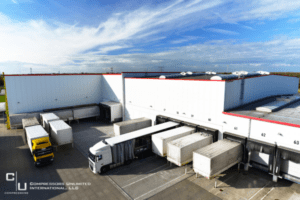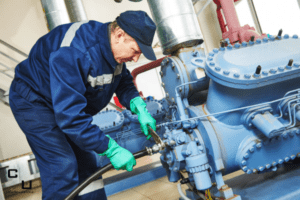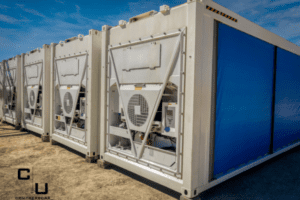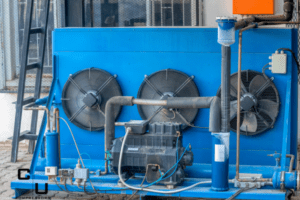Everything in a lab is optimized with one ultimate goal in mind: Integrity of results. All the environmental variables must be carefully controlled to protect important materials and samples that may take many months or years to develop.
Any change in a specimen’s state can lead to unexpected outcomes, so labs are designed from the ground up for their intended purpose. HVAC (and, often, refrigeration) systems are crucial to this effort, yet HVAC is not always included in the initial planning. This makes maintenance even more important.
Even the smallest details of the HVAC system, such as the precise diameter of the ducts themselves or the materials used in the air filters, can have an impact in a lab. Yet, in the midst of this ocean of small parts, it’s valuable not to overlook the most critical of all: The compressor.
The compressor has often been called the “heart” of an HVAC setup, and it does analogous work. When it is working correctly, it provides the physical labor necessary to distribute refrigerant gas to the other components. It will also tend to work harder if the other components are compromised in any way.
But the reverse isn’t true: The rest of the system can’t pick up the slack if the compressor is damaged. Instead, the system will come to a complete halt. Luckily, most HVAC problems are not caused by the compressor – the culprit is somewhere downstream. But when the compressor is at fault, it is a major emergency. Just a few minutes of downtime can have cataclysmic results.
Redundancy Is the Name of the Game for a Laboratory HVAC
Once the HVAC system is designed and fully optimized, then the challenge becomes 100% uptime. Even the 99.999% standard favored by the tech world isn’t enough. Many of the quality certifications favored in laboratory sciences require standards that would seem impossible in other contexts.
Although compressors don’t cause issues frequently, the potential consequences are catastrophic. With that in mind, compressor issues should be central to your regular maintenance routine. But, even with a full maintenance strategy in place, you still need to be ready for the worst-case scenario.
Having the right compressor spare parts on hand can help you make field repairs and prevent long-term downtime. But what can you do in a lab where “long-term” may be as little as two minutes? This calls for an even more proactive approach, one that emphasizes redundancy.
The world learned of the importance of medical refrigeration when first-generation COVID-19 vaccines needed low temperatures, the likes of which most pharmacies were not prepared to provide. In a lab, it may be the case that the quality standards are equal or even higher.
That makes having spare compressors on hand imperative. Even an experienced compressor technician may need half an hour to diagnose and repair an issue after a unit fails. With training, however, an older compressor can sometimes be swapped out for a new one in a very short amount of time.
Yes, compressors tend to be large and heavy, so making this kind of “swap” under a strict time limit isn’t easy. Whether you are dealing with refrigeration or HVAC, having multiple compressors duplexed into a system so they can share the load is often a necessary step to fully hardening your configuration.
In the end, though, a chain of two, three, or even four compressors may be brought down for the same reasons. Having at least one spare compressor on standby is essential. And the larger your compressor fleet is, the more spare compressors you should have if your budget allows it.
Luckily, there is a way to make full redundancy more attainable.
Remanufactured Compressors Are Affordable and Reliable
Laboratories need to deliver world-class services but can’t necessarily break the bank while doing it. After all, laboratories run the gamut in size and funding. HVAC and refrigeration are areas where it’s never advisable to try to “do more with less,” yet there are clear budget constraints to be aware of.
The solution is the remanufactured commercial compressor.
A remanufactured commercial compressor undergoes a re-engineering process enabling the unit to deliver the performance and environmental standards you expect from an all-new equipment piece. While it may take months to get a compressor from an OEM-affiliated wholesaler, a remanufactured unit arrives in a fraction of the time. The price may be reduced 10%, 20%, 30%, or more by comparison.
That savings adds up if your facility needs multiple compressors or may be growing in the future. At the same time, you can build a valuable relationship with a remanufactured commercial compressor company to get targeted advice on achieving the utmost performance from your machinery.
Laboratories can’t leave anything up to chance. Remanufactured commercial compressors aren’t just economical – they’re about stronger strategic relationships.












